Don't Forget the Enablers!
On the unsung heroes of the military machine
I’ve written some rather serious articles on #meaningful topics recently, so I’d like to get back to a more light hearted article on some under-appreciated aspects of the military. Gawd bless the enablers…
The refrain ‘amateurs talk tactics, professionals talk logistics’ is distinctly overused, especially as those that repeat it, in my experience, don’t actually tend to discuss logistics as much as they think they do.1 People will get very worked up about production ratios and numbers of trucks but will rarely discuss how the process of military logistics actually works; what structures, procedures, skills, and people are needed to get a pallet of ammunition from a warehouse somewhere into the hands of an infantryman on the frontline?
This isn’t an article about logistics per se, but rather an introduction to some of the broader enabling functions within armies that allow the shooty-shooty parts to do their thing.2 Everybody likes to talk about infantry and tanks and artillery, but not enough people really understand the diversity of the enabling arms that exist in modern militaries. The array of these enablers is utterly vast and I won’t be able to mention them all, so I apologise to the members of the various specialities out there that I don’t cover!
An Intro to the ‘Arms’
In common western parlance, the different ‘arms’ or functions of armies are broadly split into three different categories: combat, combat support, and combat service support. Different armies have different classifications, but as an example the British Army divides its arms as follows:
Combat: the spiky parts that get up close and personal with the enemy. Infantry, cavalry, armour, combat aviation.
Combat Support: the parts that aren’t immediately there to engage in direct combat, but support the combat arms intimately in battle. Combat engineers, artillery and electronic warfare, as well as (sometimes) intelligence and signals.3
Combat Service Support: The guys and gals who keep the combat and combat support troops serviced and supported. Logistics, military police, maintenance, medical, catering, personnel administration, etc.4
Unsurprisingly, you need a balanced mix of all arms in order to wage successful warfare. Not enough infantry? Have fun trying to hold ground. Not enough logisticians? Those infantry you do have won’t be able to hold the ground very well without ammunition, food, or water. No engineers? Good luck crossing any water obstacles more than waist-deep.
Conflict is the ultimate team sport - let’s have a look at some of the players.
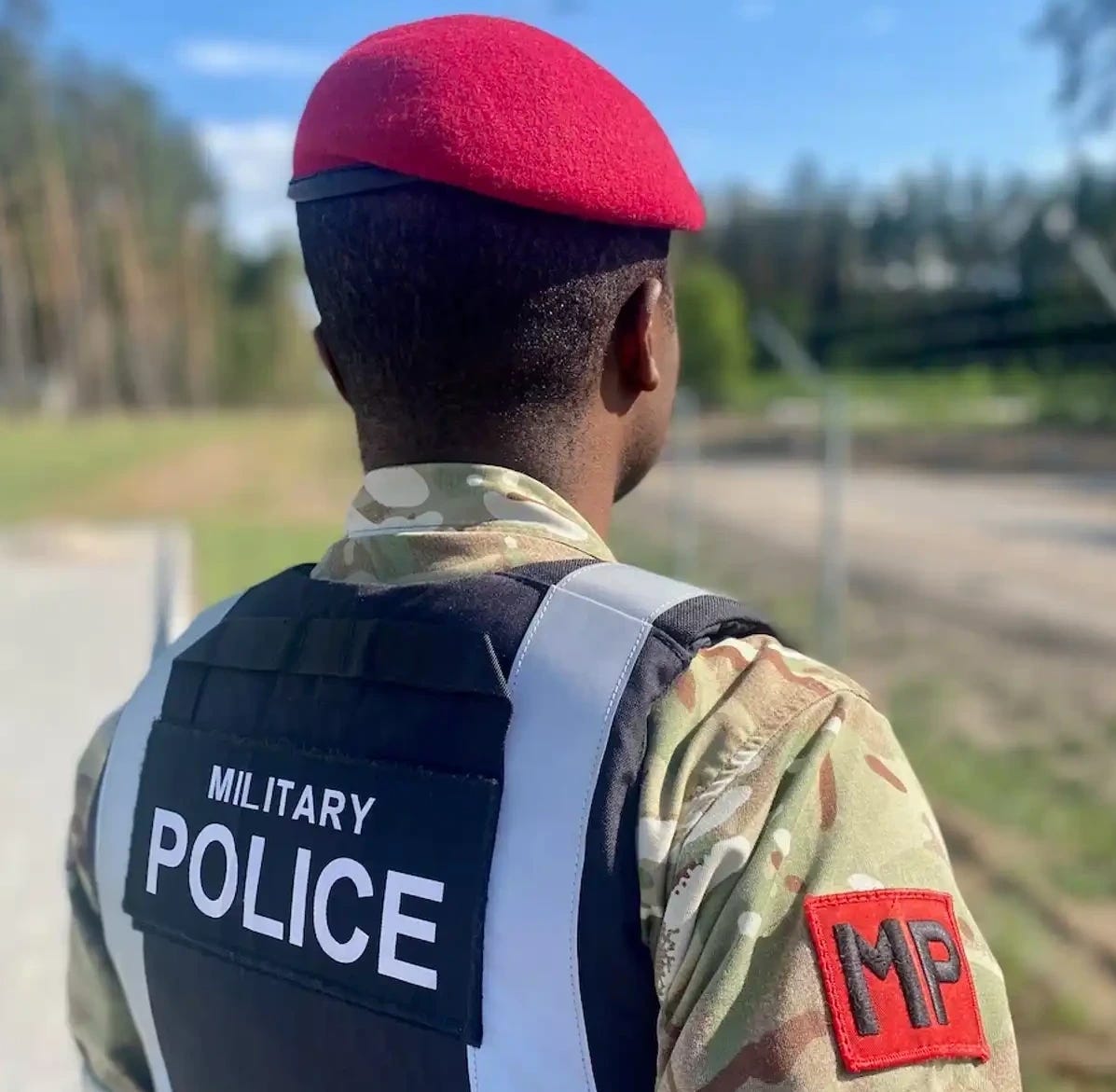
Military Police
Starting with almost certainly the most disliked branch in any army, the military police! Derided by other soldiers as being the ultimate spoilers of fun, MPs do actually have a role other than rounding up drunk squaddies on a Friday night. During operations and wartime, MPs:
Control Traffic: Unsurprisingly, with huge numbers of vehicles moving about comes a lot of traffic problems – this can actually be deadly, as the Russians found out in early 2022.5
Manage Captured Persons: Most conflicts create a lot of prisoners of war, which can be a logistic and planning burden on the force if not managed correctly.
Conduct General Policing: With the breakdown in norms that war creates comes a high chance of crimes being committed, whether by soldiers or civilians. MPs therefore will often conduct general policing duties in controlled areas.
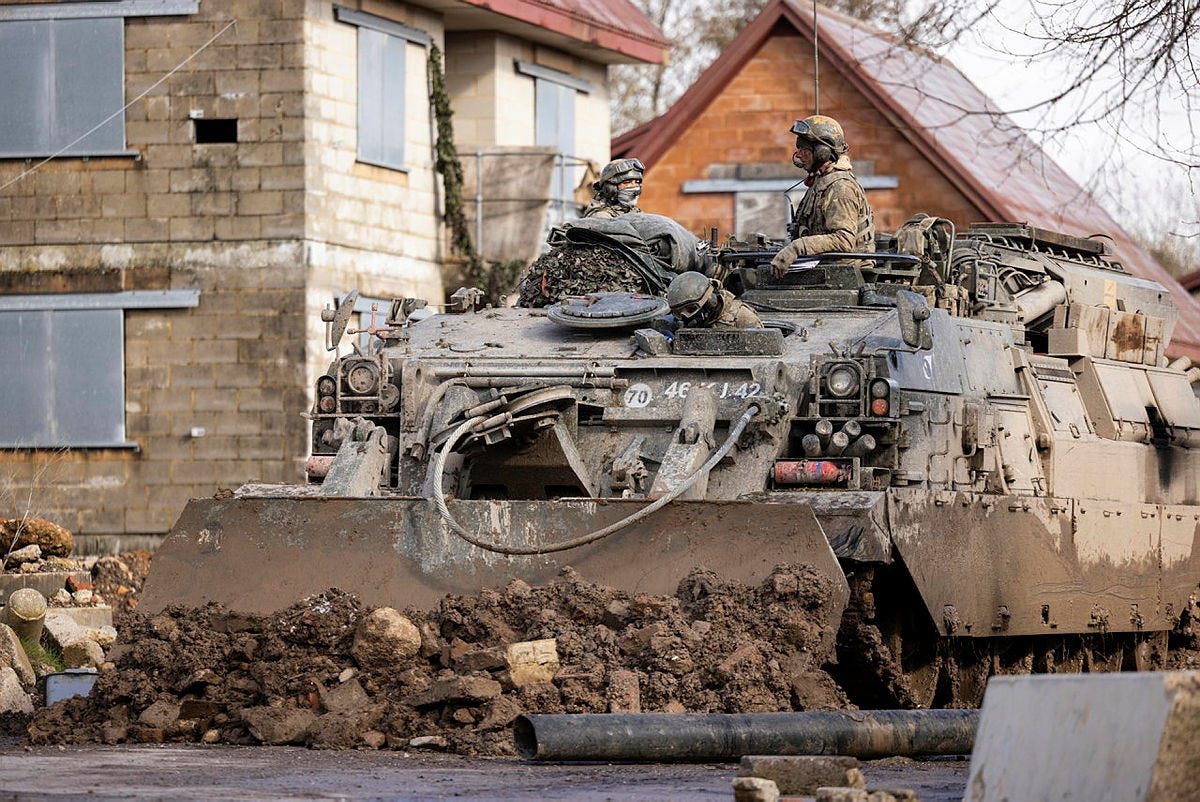
Maintenance and Equipment Support
Conducted in the British Army by the oil-stained grease monkeys of the Royal Electrical and Mechanical Engineers (REME), military maintenance and equipment support is critical in today’s heavily mechanised armies. Whether in peacetime or war, maintenance troops are always busy keeping alive fleets of complex and often ageing vehicles.6 This can often involve very close support to the combat arms – as I’ve written about previously, it is not unusual to find armoured recovery vehicles right at the front working on broken-down or damaged equipment.
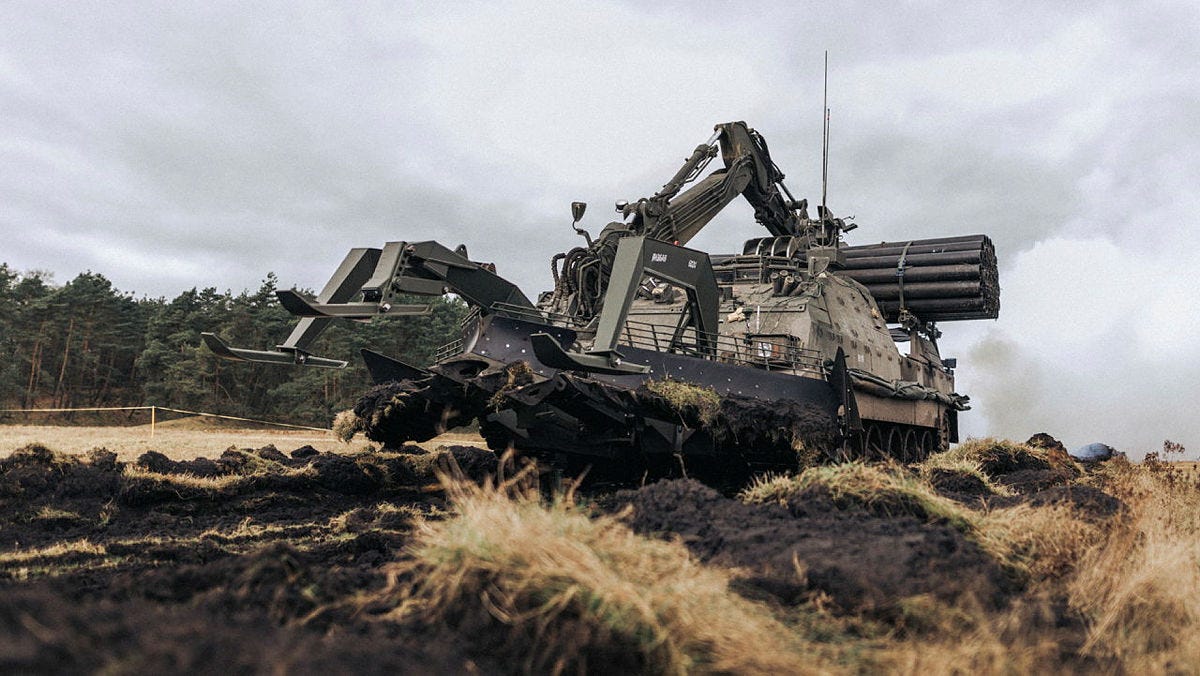
Combat Engineers
The sappers! Combat engineers fill a wide variety of critical roles, from building bridges and base infrastructure in the rear-areas to clearing minefields and fording rivers right on the front lines. Mobility and survivability are the key combat tasks of the engineers, ensuring that the rest of the force can get to where it needs to go (bridges, mine-clearance), that the enemy cannot (laying mines and building barricades), and that if the force has to stop, it has a better chance of survival (helping dig trenches, construct bunkers etc). Sappers also get to play with plastic explosives for demolitions, which is always great fun.
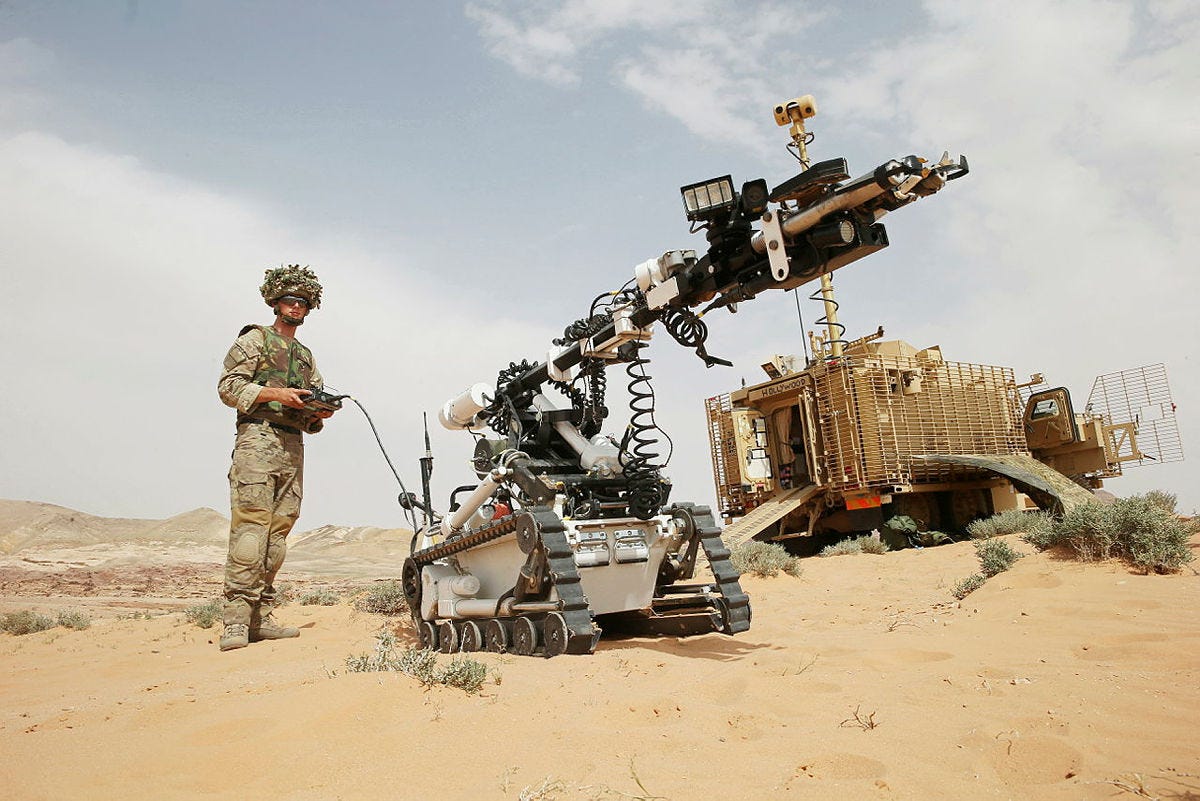
Explosive Ordnance Disposal
EOD had a hot moment of fame back in 2008 with the release of The Hurt Locker, but has since somewhat faded back into obscurity.7 Like combat engineers, EOD troops are interested in mobility and survivability – clearing unexploded ordnance so that friendly forces and civilians can continue moving around and carrying out their business with reduced worry of being blown up.
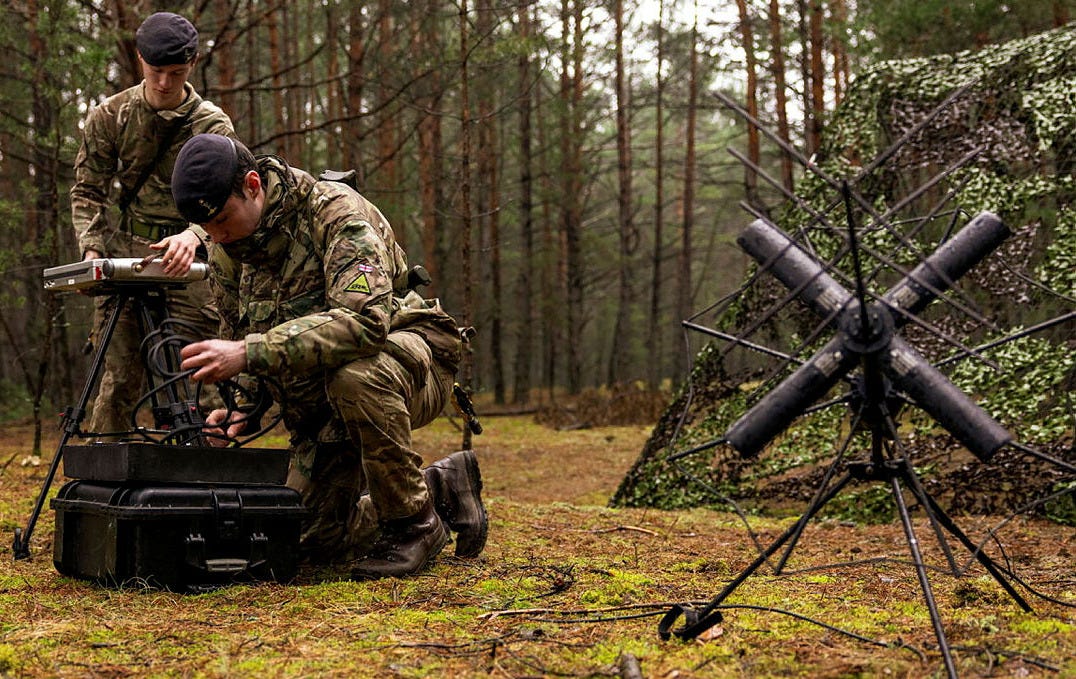
Signals
Signallers deal with all forms of communication, from basic radios all the way to highly sensitive satellite communications. In British service, parts of the Royal Signals are also tasked with conducting electronic warfare and cyber activities – key on the modern battlefield. People often forget the criticality of communications in modern warfare, including soldiers from other arms - right up to the moment when their battleplan falls apart because nobody can talk to each other. Consequently signallers are often some of the most commonly-seen soldiers in large headquarters, constantly running around dealing with laptops, cabling, and radios.
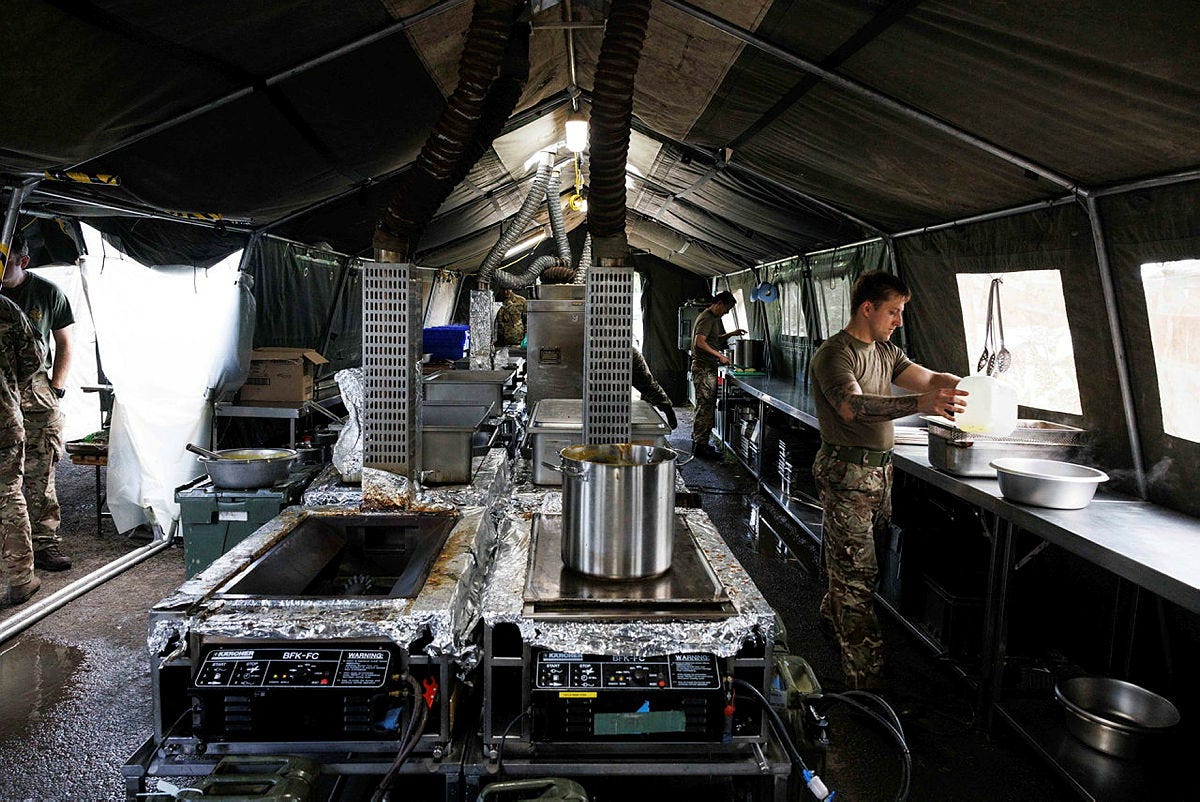
Catering
‘An army marches on its stomach’ so supposedly said Napoleon - or was it Frederick the Great? Whenever discussing supplies, people often forget food as a critical resource for frontline troops - funnily enough, soldiers don’t fight well if they are starving. However, while ready-to-eat rations are a staple of frontline feeding, soldiers can’t live off ration packs for ever, and properly cooked, nutritious hot food is genuinely a force multiplier.8 As any soldier who has been deployed will tell you, the quality of the food provided is a huge determinant on morale, and should not be underestimated!
CBRN
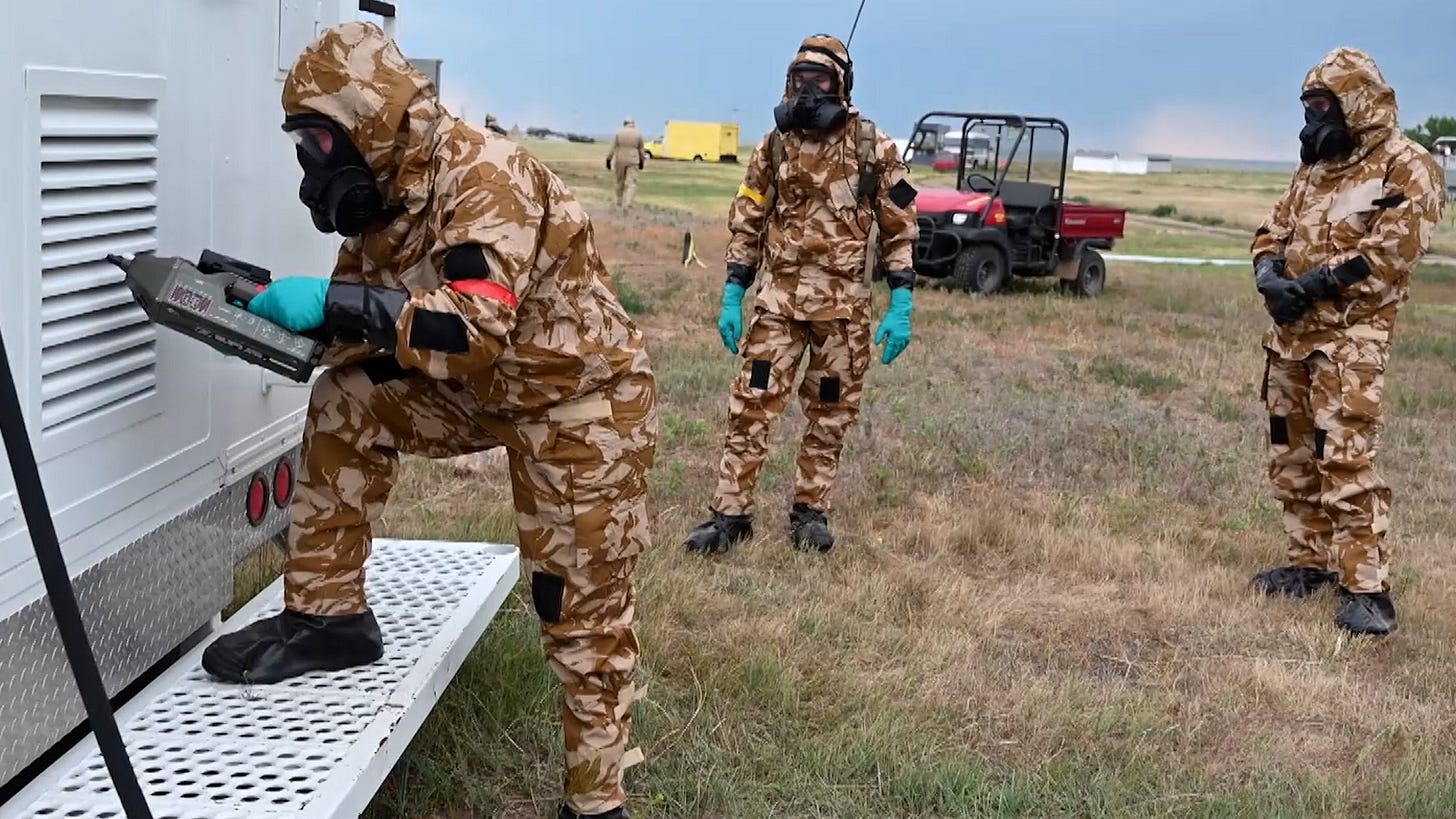
One of the most overlooked elements of modern warfare is Counter-Biological, Radiological, and Nuclear warfare (CBRN, or old-money ‘NBC’ for all the Cold War aficionados out there). CBRN sounds scary, and it is – luckily, it is not as common as it might be. That does not mean that the threat does not exist. There have been reports of the Russians using tear gas in assaults, which, though low-level, still requires CBRN protection, and most famously the Russians have active nerve agent programmes such as Novichok. Basic CBRN defence is an ‘all-arms’ (e.g. universal) activity in the military – ask anyone who has served about their experiences in basic training with the ‘confidence chamber’ – but it also requires specialists to deal with the higher-level threats.9 CBRN specialists search for, measure, test, and if possible, mitigate CBRN hazards to ensure minimum risk to friendly forces and civilians. It is an often-thankless job that involves a lot of time wearing very uncomfortable and hot protective clothing.
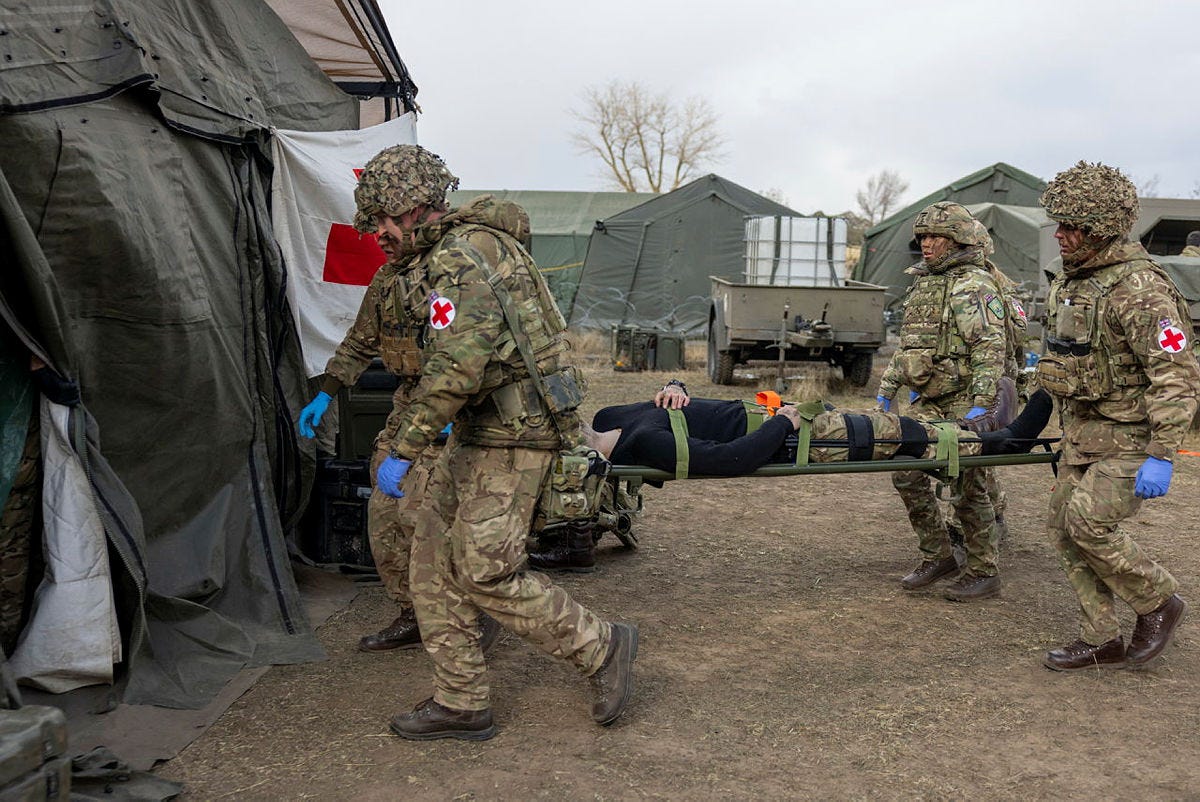
Medical and Dental
The military medical chain is vast and complex, ranging from basic front-line medics all the way to huge rear-area field hospitals. There are never enough medical personnel and they are needed everywhere, from assisting casualties on the frontline to dealing with sick civilians in the rear area. Dental is important as well – soldiers with crippling toothache are unlikely to be particularly combat effective.
Chaplains
Better known as ‘padres’ in British service, Chaplains – military religious personnel – still have an important role even in our increasingly secular world. Beyond their religious duties, they also provide general welfare support to soldiers of all faiths (and none), and advice on religious and ethical matters to commanders. Chaplains are a unique part of military life and often (at least in British service) have interesting backgrounds – one I knew of had a previous career as a Club DJ!10
Civil-Military Cooperation
Also known as civil affairs, CIMIC professionals are a military’s diplomats and press officers. They will be tasked with managing relations with local civilian authorities in the area of operations and helping coordinate and deconflict civilian – whether governments, NGOs, or private businesses – and military responses to the problems of the day. Especially useful in counter-insurgency, irregular warfare and urban contexts - essentially, any situation where there are a lot of civilians present (i.e. in most wartime scenarios).
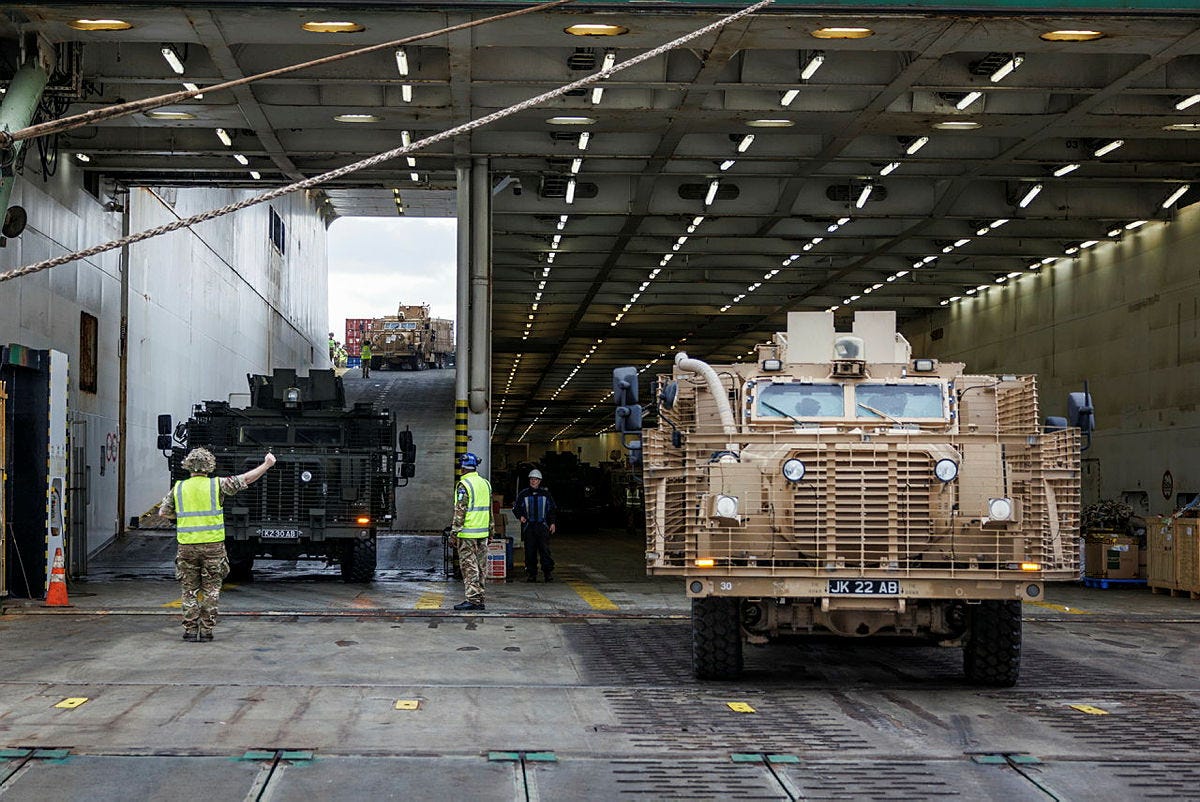
Logistics
And yes, finally, we come to military logistics, an utterly vast function that involves dozens of specialities and a huge proportion of any army’s personnel. Military logisticians can include everything from truck drivers at the front to data junkies in rear headquarters, from mariners and port operators (yes, even in the Army) overseeing the unloading of equipment from ships to couriers delivering post by air.
Something to bear in mind is that despite being an ‘enabler’, logistic re-supply is so crucial that it is often ‘enabled’ itself - sappers will build logistics bridges, MPs will be brought in to ensure smooth traffic flow, and infantrymen and air defence assets will be tasked away from the front to provide protection to convoys. This has become even more important in today’s open battlespace of long-ranged precision weaponry; there are few truly ‘safe’ areas in wartime.
Summary
Hopefully the above is a useful introduction to some of the many enablers required to fight modern warfare. To reiterate, conflict is a team sport. Just as if you only focused on the striker, fly-half or quarterback in a sports team, if you are spending all your time focusing on the combat arms, you are not seeing the whole picture.
There are reams to be written about the above, as well as the other arms – if anyone is interested, I’ll happily do some deep dives. What other branches do you think are unsung heroes? Let me know in the comments below.
All the best,
Matthew
I recently listened to a podcast with Mick Ryan who made the excellent (and true) point that professionals actually talk about command and control, but I digress….
I’m going to focus on land warfare for this article, just for ease – hence ‘armies’.
Intelligence and Signals are sometimes categorised as ‘Command Support’ in certain circles.
If you remember my article on the military staff, CSS is covered mostly by the J1 and J4 functions.
Long slow columns of vehicles make excellent target practice for artillery, in case it wasn’t more obvious.
Tanks, though powerful and heavily armoured, are not the most reliable of vehicles; 30-year old tanks are even less so…
For interest: in the UK, EOD is carried out by both the Royal Engineers and the Royal Logistics Corps, though it is sometimes a separate branch in other armies.
If you don’t believe me, go live on ration packs in a muddy hole for two weeks and then tell me how good your first cooked hot meal tastes afterwards…
The less politically-attuned name for the confidence chamber is the ‘gas chamber’….
I can’t remember exactly, but I think for a while he kept moonlighting as a DJ on weekends in addition to his job as a padre. Absolute legend.



Good run down, would be great to see a something similar on navies and air forces!
The Padre/DJ combo doesn't surprise me at all. Both jobs require someone to lead a group into a “mood.”